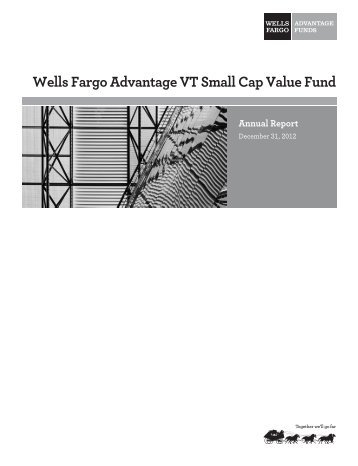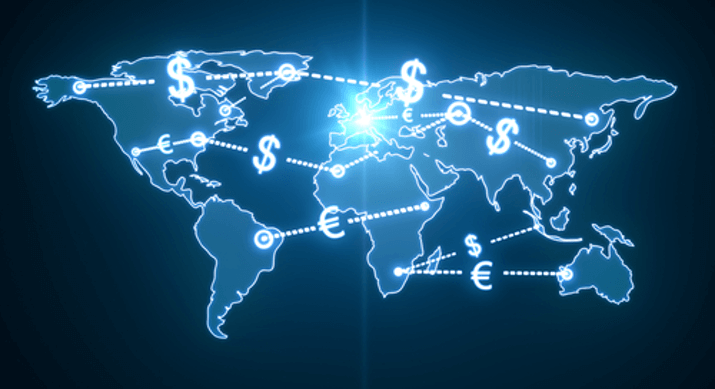Contents:


Without competition, in other words, it enjoyed a monopolistic position in regard to pricing. As there are no close substitutes of the product, demand for the product in monopoly is inelastic. As opposed to monopolistic competition, as the products offered by the different sellers are not identical but similar, hence its demand is highly elastic. Based on competition, the market is divided as perfect competition and imperfect competition. Further, there are three types of imperfect competition, monopoly, oligopoly and monopolistic competition.
If there is only one main employer of labour, then they have market power in setting wages and choosing how many workers to employ. A monopoly occurs when a single company that produces a product or service controls the market with no close substitute. In the short run, both under monopoly and monopolistic competition, the firm can enjoy super-normal profits, normal profits or can sustain losses.
Opinion Monopoly’s Bad Cousin – The New York Times
Opinion Monopoly’s Bad Cousin.
Posted: Mon, 15 Nov 2021 08:00:00 GMT [source]
That allows the company to drive down employee wages eventually. It’s also the default search engine across multiple web browsers, including the iPhone’s Safari browser. That explains why the Justice Department opened an antitrust lawsuit against Google for allegedly operating like an illegal monopoly.
Profit-maximizing owners were willing to pay athletes their MRPs. Average annual salaries for baseball players rose from about $50,000 in 1975 to nearly $1.4 million in 1997. Average annual player salaries in men’s basketball rose from $109,000 in 1976 to $2.24 million in 1998. Football players worked under an almost pure form of monopsony until 1989, when a few players were allowed free agency status each year. In 1993, when 484 players were released to the market as free agents, those players received pay increases averaging more than 100%. Under the NFL collective bargaining agreement in effect in 1998, players could become unrestricted free agents if they had been playing for four years.
What is a Monopoly?
A monopoly market does not involve any entity apart from a single seller and consumers. The market for the particular product or service is created by the firm, in the first instance. In an oligopoly, a few sellers supply a sizable portion of products in the market. They exert some control over price, but because their products are similar, when one company lowers prices, the others follow.
About half signed new contracts with their old teams while the other half signed with new teams. Table 14.1 “The Impact of Free Agency” illustrates the impact of free agency in four professional sports. The difference between the two lies in what is being singularly controlled; in one case, the supply of the goods or services, in the other, the demand for items or the market for them. Profit-maximizing owners were willing to pay athletes theirMRPs.
If these people are working as labor but only have a single buyer of their services, this is considered as a Monopsony. People are forced to work at rates decided by the monopsonist and they also have to bear the terms and conditions set by him. There are industries where there are several suppliers but only a single buyer. One perfect example is defense equipments where there are many companies making these equipments but they eventually have to sell to the government which is the only buyer.
- It includes the $8 the firm pays for the fourth unit plus an additional $2 for each of the three units the firm was already using, since it has increased the prices for the factor to $8 from $6.
- In addition, because the cost of starting a business in an oligopolistic industry is usually high, the number of firms entering it is low.
- However, certain actions that may be deemed coercive, abusive, or ultra-dominant can amount to market manipulation and, therefore, result in government sanctions.
- In 1977, a lawsuit filed by several baseball players resulted in the partial dismantling of the reserve clause.
- A cartel is an organization created between a group of producers of a good or service to regulate supply and manipulate prices.
- It is obvious that neither monopoly nor Monopsony is ideal for consumers.
Investopedia requires writers to use primary sources to support their work. These include white papers, government data, original reporting, and interviews with industry experts. We also reference original research from other reputable publishers where appropriate. You can learn more about the standards we follow in producing accurate, unbiased content in oureditorial policy.
Understanding the differences between a monopoly and monopsony
If one company undermines its competition, others are forced to quickly follow. Companies that lower prices to the point where they are not profitable are unable to remain in business for long. Because of this, members of oligopolies tend to compete in terms of image and quality rather than price. Because there is no dominant force in the industry, companies may be tempted to collude with one another rather than compete, which keeps non-established players from entering the market.
But in the long run, firm under monopolistic competition will enjoy only normal profits. Several companies merging to form one entity, for instance, can lead to a monopoly. On the other hand, one large firm can acquire the businesses of all or most of its smaller competitors and then close them down, leaving it with total control of the market.
A monopsony can arise in a market that is geographically isolated or where transportation costs are high. This can limit the number of potential buyers and make it difficult for competitors to enter the market. This may also make it hard for market participants outside of the geographic region to ship goods into a physical area. Monopsonies take many different forms and may occur in all types of markets. For example, some economists have accused Ernest and Julio Gallo–a conglomerate of wineries and wine producers–of being a monopsony.
The difference between a monopsony and a monopoly
While a monopoly has exclusive control over the supply of a good or service, a monopsony has exclusive control over the demand for that good or service. A monopoly leads to the producers have excess power, while a monopsony leads to a consumer having excess power. They fear these industry giants will influence pricing power and exert their ability to suppress industry-wide wages. Economists and policymakers have increasingly become concerned with the domination of just a handful of highly successful companies controlling an outsized market share in a given industry.

Depending on the factor supply curve, firms may also have some power to set prices they pay in factor markets. Ideal market conditions are not existent everywhere and there are situations where the market is skewed either towards buyers or towards sellers. Monopoly is referred to a market condition where there is only one producer in a particular industry and the consumers really have no option but to buy his products or service. This is an ideal condition for the player as he can dictate the terms and set the prices on his whim.
This creates a fundamental difference between price-taking and price-setting firms in factor markets. A price-setting firm faces an upward-sloping supply curve such as S in Panel . To obtain a larger quantity, such as Q2, it must offer a higher price, P2. A monopsony is a market condition in which there is only one buyer. Because there is only one buyer for a good or service, the buyer sets the demand, and therefore, controls the price. Monopsonies, like monopolies, are inefficient to a free market, where supply and demand regulate prices to be fair for consumers.
On the contrary, in a monopolistic competition, as the product offered by different sellers are close substitutes, and so, there is slight product differentiation. Now suppose you are given the following data for the firm’s total product at each quantity of labor. Assume the firm sells its product for $10 per unit in a perfectly competitive market. Compute MRP and plot the MRP curve on the same graph on which you have plotted supply and MFC.
A clear understanding of this relationship will help to clarify both models. • Monopoly and Monopsony are imperfect market conditions that are just opposite of each other. A monopsony is unique to other forms of market situation with distinctive market features.
It can be understood that, in a difference between monopoly and monopsony market, the seller has the discretion to charge different prices to different sets of customers. However, in monopolistic competition, there exists non-price competition. Sellers in this market cannot adopt a price discrimination policy for their customers. Also, the combined effect of various characteristics of the monopoly market ensures that the market player is a sole price setter.
Monopoly and Monopsony: A Comparison
Monopsony power arises when the buyer has the ability to lower the price of a product or service by reducing the quantity they purchase. Because of their unique position, monopsonies have a wealth of power. For example, being the primary or only supplier of jobs in an area, the monopsony has the power to set wages. In addition, they have bargaining power as they are able to negotiate prices and terms with their suppliers. The existence of a sole player in a monopoly market causes buyers to retain no control over product prices. The price quoted by the seller will have to be accepted by buyers.
- Supply is a fundamental economic concept that describes the total amount of a specific good or service that is available to consumers.
- Patents allow companies a certain period to recover the heavy costs of researching and developing products and technologies.
- Given the supply curve for labor, S, and the marginal factor cost curve, MFC, the monopsony firm will select the quantity of labor at which the MRP of labor equals its MFC.
- The technology engineering market offers one example of wage suppression.
- A monopoly is one seller and many buyers, while a monopsony is one buyer and many sellers.
This cooperation makes them operate as though they were a single company. But under monopolistic competition, there is always product differentiation. There are also entities which are known for being monopsonistic but which are made so under government law due to the specific nature of their business. Monopolies are often viewed in a negative light because they stifle competition in what are supposed to be free markets. In addition, some monopolies exist due to lacking or non-existent market regulation by a country’s government. This is why competition laws are enacted in some countries to restrict or prevent monopolies.
In this way, they circumvent the natural economic laws of supply and demand. A monopsony results when an individual or firm turns out to be the sole or dominant purchaser of a good or service. This means most or all sellers in a marketplace will be competing amongst each other in order to sell their product or service to that single entity.
The good produced in these extremely rural areas often can’t be shipped around the world. For this reason, this type of agriculture is often only demanded by local governments or local food processing companies. Product predictability is high due to the presence of only one seller in a monopoly market.
Threats of Antitrust Enforcement in the Supply Chain – Foley & Lardner LLP
Threats of Antitrust Enforcement in the Supply Chain.
Posted: Thu, 04 Aug 2022 07:00:00 GMT [source]
Many people have trouble in understanding the difference between monopoly and monopolistic competition, so here we’ve simplified it for you. Monopoly refers to a market structure where there is a single seller dominates the whole market by selling his unique product. On the other hand, Monopolistic competition refers to the competitive market, wherein few sellers in the market offer near substitutes to the customers. Both signify conditions of imperfect competition, in which a single entity can influence what would otherwise be a free market with high barriers to entry. Under monopoly and monopolistic competition, a firm cannot determine both price and output at the same time.
Apple sued by developers for ‘monopolist’ control over iOS app … – MediaNama.com
Apple sued by developers for ‘monopolist’ control over iOS app ….
Posted: Wed, 03 Aug 2022 07:00:00 GMT [source]
Left unchecked, monopolies and monopsonies can lead to societal inequalities, as well as lack of innovation and diversity. Understanding them is helpful for protection of small businesses, which may fail due to their inability to compete in the absence of a level playing field. Since Walmart commands the low-cost segment, the profit margins are razor thin, killing any incentive for competitors wishing to challenge them.
The company is so large and has so much buying power over grape growers that grape wholesalers have no choice but to lower prices and agree to the company’s terms. Whereas a monopoly results in only one seller of a good that creates upward pricing pressure, a monopsony is a market condition with only one buyer who may be able to cause downward pricing pressure. More number of players in a monopolistic market makes product predictability low. The seller in a monopoly market does not experience any competition. Major differences between monopoly and monopolistic competition have been discussed below.
There is zero or negative cross elasticity of demand for a monopoly product. Monopoly can be found in public utility services such as telephone, electricity and so on. We have seen that market power in product markets exists when firms have the ability to set the prices they charge, within the limits of the demand curve for their products.